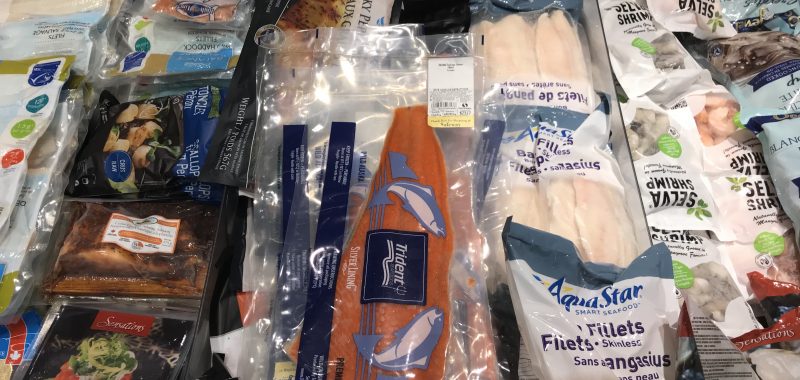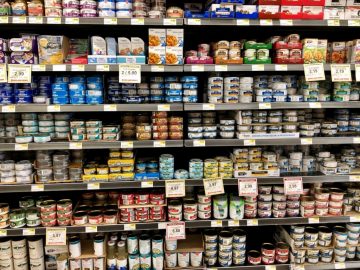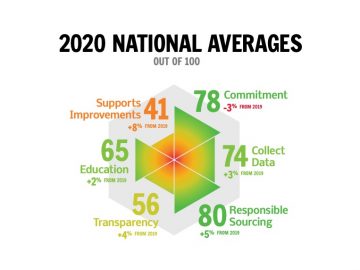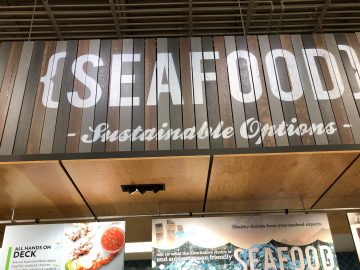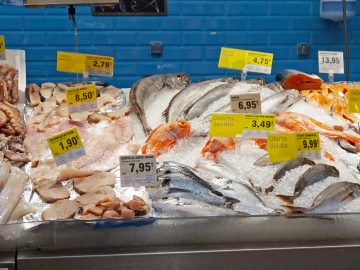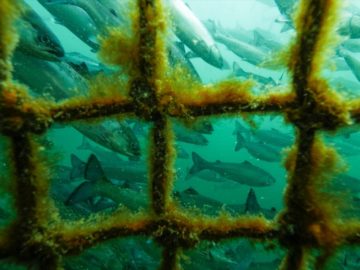It’s time to change the widely held perception that “fresh” is always better.
Summer is officially over in Canada – and for most of us that means an end to the supply of fresh wild fish and seafood in our retail stores. Consumer research shows that “freshness” is the highest ranking consideration for people buying fish, but I don’t think many people realise that when it comes to seafood “fresh” is not the same as “freshness”.
In seafood labelling, “fresh” means that the product has never been frozen – it doesn’t mean it was caught early this morning while you were still sleeping. In fact, it can sometimes take a week or more for fresh seafood to get from the water to store shelves. And because fresh seafood is so perishable, a lot of it ends up in the garbage. Believe it or not, frozen is often the better way to buy high quality seafood.
For decades, the choice between “fresh” and “frozen” seafood has been debated. Don’t get me wrong, nothing beats the quality and taste of fresh seafood right out of the ocean. But most consumers don’t get their seafood that way. The vast majority of seafood available in our grocery stores has travelled a long way to get there, so freezing is critical in maintaining its freshness. In the past, fresh seafood was the clear winner (think mushy fish sticks). But the seafood world has come a long way, particularly when it comes to processing and freezing technologies.
These days most seafood is flash frozen, rapidly brought down to between -40 to -60˚C immediately after capture. This process maintains the integrity of the protein so there’s no mush involved. Flash freezing also minimizes nutrient loss and makes the seafood safer to eat because the freezing process kills harmful bacteria. This is particularly true for raw fish consumption (think sushi).
In addition to tasting great and being good for you, frozen seafood can also be more sustainable and more affordable than never frozen options. Fresh seafood, when not consumed locally, needs to be shipped by plane to get where it is going as quickly as possible. Frozen fish, on the other hand, can be moved by boat, rail or truck – all of which are carbon light when compared to air travel. Furthermore, seafood frozen in portions can be removed from the freezer as needed, reducing food waste – another win for sustainability. And as if that wasn’t enough, frozen seafood can be consumed anytime of the year and is often more affordable than its fresh counterpart!
Now, not to complicate things, but it’s important to point out that seafood that is not frozen was not necessarily never frozen. There is a good chance it arrived at the store hard as a rock, but was thawed for display because sellers think you would rather buy it that way. In this case the label should state “previously frozen”, but the travesty here is when non-frozen seafood – whether it was never or previously frozen – is never eaten but ends up in the garbage. This widespread waste of fish and other seafood is a sustainability disaster – particularly for seafood on the lower end of the environmental and/or social responsibility spectrum. Freezing seafood is the best option to reduce waste all along the supply chain, including after it’s harvested, during transport, while it’s waiting to be sold and waiting to be eaten!
Indeed, it’s time we gave not previously frozen fish a new name (“never frozen”?) because calling it “fresh” suggests that frozen fish is, well, not fresh, which couldn’t be further from the truth. In fact, properly frozen fish is among the freshest fish you can buy.
Here are a few tips for ensuring your frozen fish is of the highest quality and taste:
- The best flash-frozen fish will be vacuum-sealed or be encased in ice.
- Look for freezer burn or crystals which suggest the fish has been thawed and refrozen, which affects quality.
- Individual fish fillets in a bag or box should be separated. If they are all stuck together it could mean the package warmed up in transit but was refrozen before hitting the shelves.
- Defrost fish in the refrigerator or in a cold-water bath – do not place in warm water as it can impact the texture of the fish.
- Avoid refreezing fish once it has thawed. Doing so will comprise the texture of the fish.
